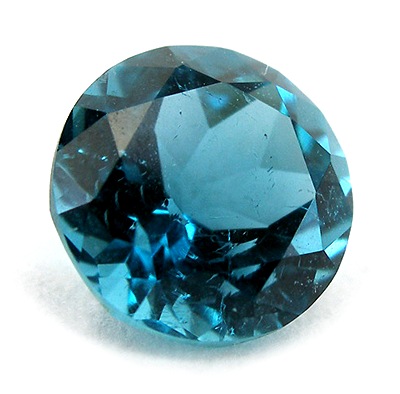The ancient Aztecs believed that turquoise was a holy stone and that mortals were not worthy of wearing it. As such, it was reserved for the worship of gods.
 |
| Double headed serpent originally from Aztec Mexico, now at the British Museum. It is a mosaic of mostly turquoise over a carved wooden sculpture. |
Turquoise is a very soft material that is blue to green to yellow green in colour. It has been mined since at least 6000 BC and used in jewelry for almost as long.
 |
| Medallion with Turquoise from Tibet, now found in the Musée Guimet in Paris |
Turquoise has long been sought-after because of its beautiful blue colour. In the past, the finest material came from Persia (Iran) and was a sky blue colour. Persian turquoise is no longer mined, and today most turquoise come from the US and China.
Turquoise is the birthstone for those born in December.
 |
| Turquoise rough and turquoise cabochons |
Much of the turquoise sold today is not natural turquoise. Simulated turquoise is not new. Ancient Egyptian artisans developed faience, a copper glazed ceramic imitation, when high quality deposits of turquoise were no longer available.
Although natural turquoise does exist, this high grade material comes with a high price tag. Because turquoise is such a soft stone (5 to 6 on Moh’s scale of hardness), it is usually treated for stability.
When purchasing turquoise, one should be aware of the different treatments and imitations that exist for this stone.
• Stabilized turquoise - Real turquoise that is treated with plastic resin or waxes to make it more stable and less crumbly.
• Reconstituted turquoise – Small chips and powder of real turquoise are bound with resin and dyes. This material is much less expensive than natural turquoise.
• Block turquoise – Mixture of resins and dyes and does not contain any actual stone. Does not have the same value as natural turquoise.
• Imitation and simulated turquoise – Materials that are dyed to look like turquoise. These include stones like howlite and magnesite as well as glass, plastic and ceramic. These materials do not have the same value as natural turquoise.
• African Turquoise – This stone is not turquoise. It is jasper and should have a lower price.
 |
| Nugget of howlite, dyed to imitate turquoise |
Caring for Turquoise
Turquoise is a porous material and natural and stabilized turquoise can darken with wear as it tends to absorb body oils. It should be wiped with a damp cloth after wear for cleaning.
Protect your turquoise jewelry from heat, chemicals and shock. Ultrasonic or steam cleaning should not be used and one should avoid putting on lotions or perfumes when wearing turquoise jewelry.
Rings and bracelets made from turquoise should not be for everyday wear. Keep them for occasional wear to protect the stone from the abuse that bracelets and rings often take.
Store your turquoise jewelry in a cool, dark box in a layer of acid-free tissue paper.
Fortunately, the Aztec practice of reserving turquoise for the gods is no longer observed and we can all enjoy some beautiful turquoise jewelry.
Featuring artisan handmade creations by the Etsy Starving Artists jewelry team. SATeam members create handcrafted jewelry and beads. More information about our team and its current Etsy shop owner members can be found at SATEAM.etsy.com.

























































